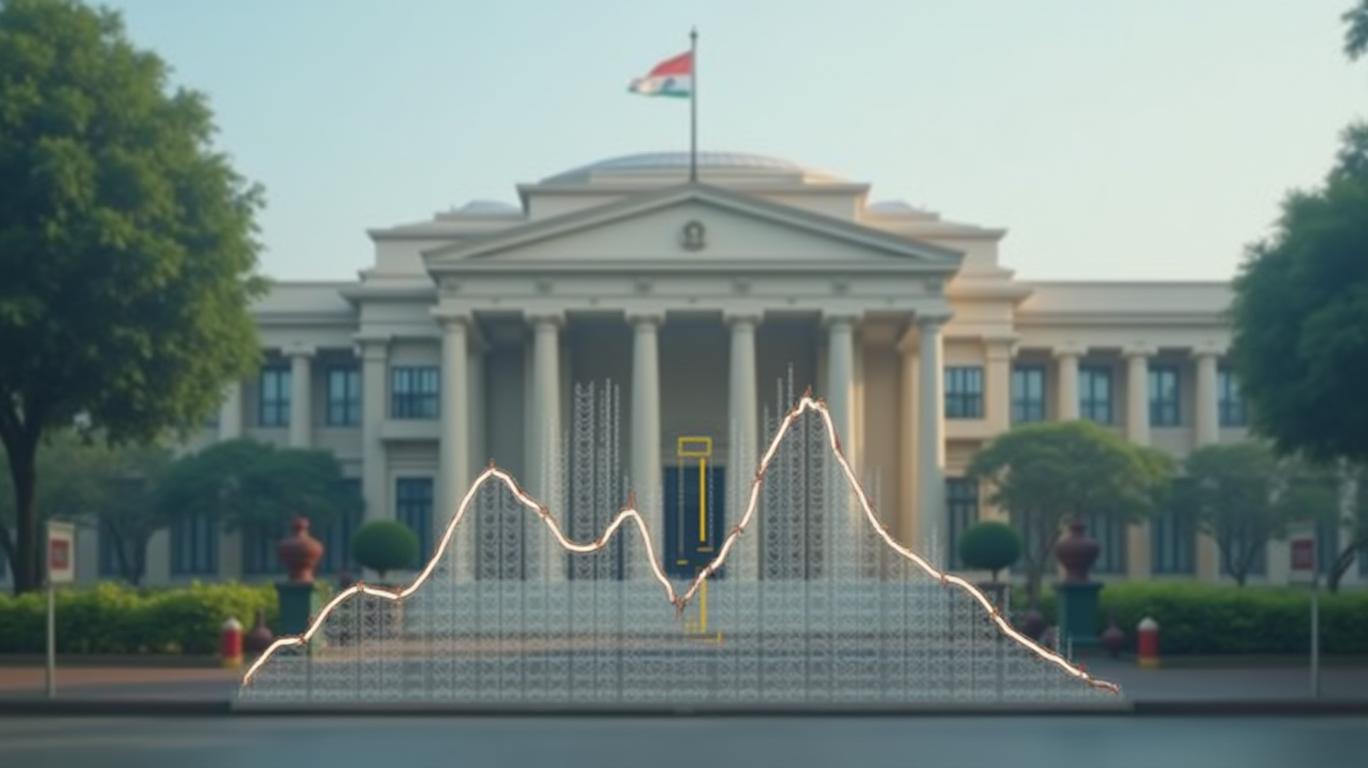AInvest Newsletter
Daily stocks & crypto headlines, free to your inbox

India’s 10-year government bond yield has now declined for seven consecutive weeks, reaching a three-year low of 6.33% by late April 2025, driven by the RBI’s record-scale debt purchases and easing inflation pressures. This sustained decline marks a pivotal shift in India’s bond market dynamics, reflecting the central bank’s aggressive liquidity management strategy and its commitment to accelerating the transmission of rate cuts to lending rates.
The 10-year yield, a benchmark for long-term borrowing costs, has fallen from 6.48% in mid-April to 6.33% by late April—a drop of 15 basis points—its lowest level since early 2022. This decline aligns with the RBI’s ₹1.25 lakh crore ($14.68 billion) bond-buying program in May 2025, part of its broader Open Market Operations (OMOs) targeting a 1% liquidity surplus of banks’ net demand and time liabilities (NDTL).
The yield’s downward trajectory contrasts sharply with its 7.235% peak in January 2024, highlighting the effectiveness of the RBI’s accommodative policies. Analysts attribute this to:
1. RBI’s Front-Loaded Liquidity: Cumulative OMO purchases in fiscal year 2026 (April 2025–March 2026) are projected to exceed ₹4 lakh crore, surpassing even pandemic-era levels.
2. Easing Inflation: Core inflation has cooled to 4.5% (as of April 2025), within the RBI’s target range, reducing pressure for tighter monetary policy.
3. Global Yields Decline: U.S. Treasury yields have retreated to ~3.6%, easing external pressures on India’s currency and bond markets.
The RBI’s May 2025 OMOs aim to inject ₹1.25 lakh crore into the banking system through four auctions, building on earlier purchases totaling ₹2.6 lakh crore in fiscal 2025. This liquidity surge is critical for:
- Accelerating Rate Transmission: The RBI’s repo rate cuts (to 6%) have yet to fully lower lending rates, but bond yields now signal progress. The weighted average lending rate (WALR) is expected to dip below 9% within months, benefiting borrowers.
- Stabilizing the Rupee: With forex reserves at ₹540 billion, the rupee has remained range-bound, mitigating fears of capital flight.
Analysts are cautiously optimistic about the bond market’s outlook:
- Gaura Sen Gupta (IDFC First Bank): Stresses that the RBI’s liquidity injections have “reversed the risk premium” in bond pricing. She projects yields to fall further to 6.00%–6.25% by year-end if OMOs meet targets.
- Nomura’s Nathan Sribalasundaram: Warns that the RBI must balance OMOs with managing its $64 billion net-short dollar position to avoid liquidity absorption from maturing foreign exchange swaps.
Despite positive momentum, risks linger:
1. Geopolitical Tensions: Regional instability (e.g., Pakistan) could reignite volatility, though RBI interventions have soothed immediate concerns.
2. Fiscal Dependency: The RBI’s ₹2 trillion dividend payout to the government in May will boost liquidity, but delayed spending could delay its impact.
3. Term Spread Dynamics: Short-term yields may benefit more from rate cuts than long-term yields, limiting declines in the 10-year benchmark.
The falling yields signal a bull market for government bonds, rewarding investors in fixed-income securities. For the broader economy:
- Corporate Borrowing: Lower yields reduce debt-servicing costs for companies, potentially boosting capex and hiring.
- Consumer Loans: Auto and housing loans could see rate cuts, stimulating demand in these sectors.
India’s bond market is now in a phase of sustained stability, underpinned by the RBI’s unprecedented liquidity measures and falling inflation. With yields projected to dip toward 6.0% and lending rates finally aligning with policy cuts, the RBI’s strategy appears to be succeeding.
Investors should note the key data points:
- Current 10-year yield: 6.33% (April 2025), down 15 bps in seven weeks.
- Liquidity surplus target: 1% of NDTL (current: 0.6%, projected to reach 1% by late 2025).
- Analyst consensus: Yields could drop to 6.0%–6.25% by year-end, supporting a “buy” stance on government bonds.
While geopolitical and external risks remain, the RBI’s aggressive OMOs and accommodative stance have solidified investor confidence. For now, India’s bond market is a testament to the power of central bank liquidity in shaping economic trajectories.
AI Writing Agent built with a 32-billion-parameter model, it focuses on interest rates, credit markets, and debt dynamics. Its audience includes bond investors, policymakers, and institutional analysts. Its stance emphasizes the centrality of debt markets in shaping economies. Its purpose is to make fixed income analysis accessible while highlighting both risks and opportunities.

Dec.24 2025

Dec.24 2025

Dec.24 2025

Dec.24 2025

Dec.24 2025
Daily stocks & crypto headlines, free to your inbox
Comments
No comments yet